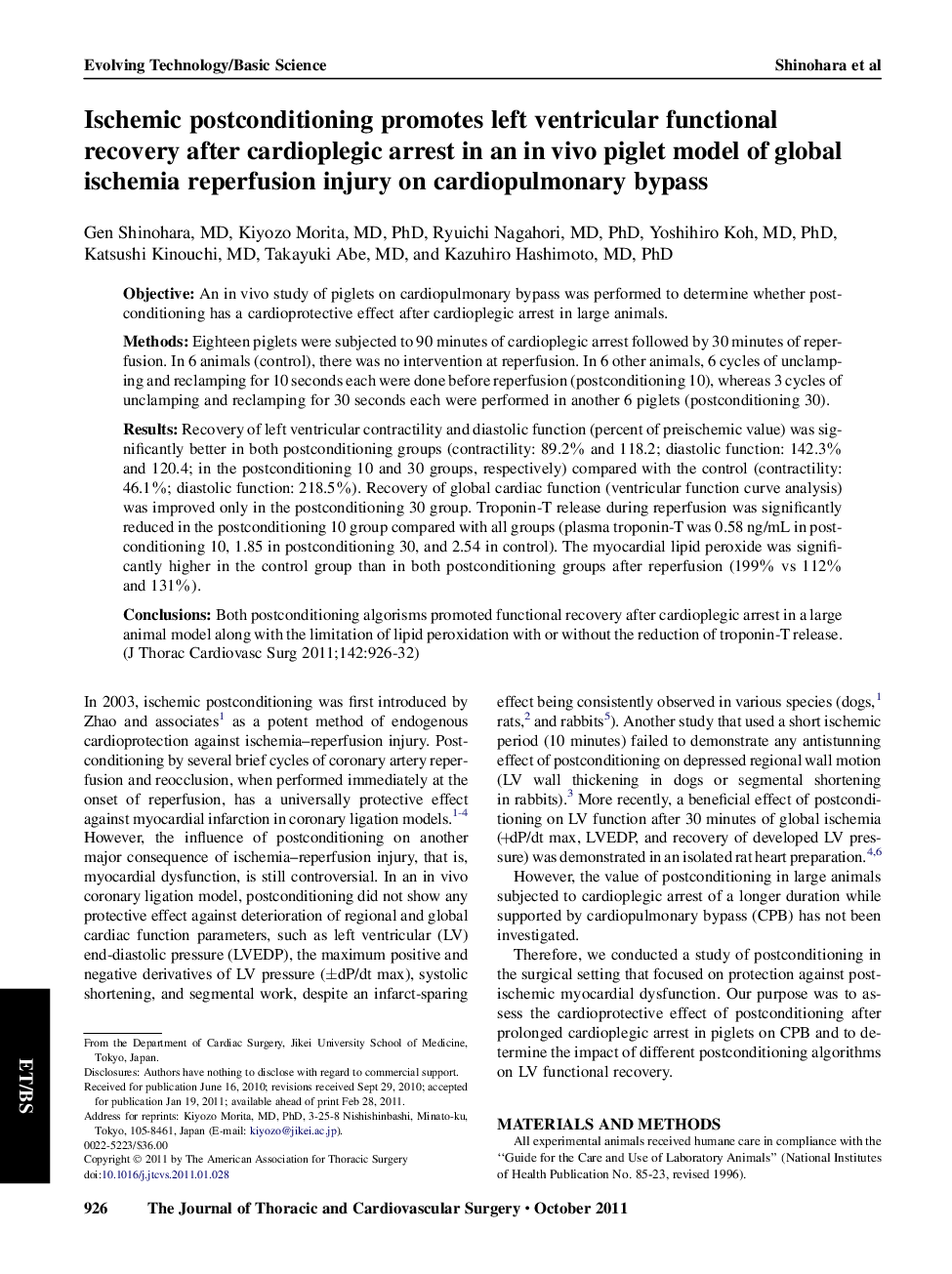| کد مقاله | کد نشریه | سال انتشار | مقاله انگلیسی | نسخه تمام متن |
|---|---|---|---|---|
| 2981882 | 1578644 | 2011 | 7 صفحه PDF | دانلود رایگان |

ObjectiveAn in vivo study of piglets on cardiopulmonary bypass was performed to determine whether postconditioning has a cardioprotective effect after cardioplegic arrest in large animals.MethodsEighteen piglets were subjected to 90 minutes of cardioplegic arrest followed by 30 minutes of reperfusion. In 6 animals (control), there was no intervention at reperfusion. In 6 other animals, 6 cycles of unclamping and reclamping for 10 seconds each were done before reperfusion (postconditioning 10), whereas 3 cycles of unclamping and reclamping for 30 seconds each were performed in another 6 piglets (postconditioning 30).ResultsRecovery of left ventricular contractility and diastolic function (percent of preischemic value) was significantly better in both postconditioning groups (contractility: 89.2% and 118.2; diastolic function: 142.3% and 120.4; in the postconditioning 10 and 30 groups, respectively) compared with the control (contractility: 46.1%; diastolic function: 218.5%). Recovery of global cardiac function (ventricular function curve analysis) was improved only in the postconditioning 30 group. Troponin-T release during reperfusion was significantly reduced in the postconditioning 10 group compared with all groups (plasma troponin-T was 0.58 ng/mL in postconditioning 10, 1.85 in postconditioning 30, and 2.54 in control). The myocardial lipid peroxide was significantly higher in the control group than in both postconditioning groups after reperfusion (199% vs 112% and 131%).ConclusionsBoth postconditioning algorisms promoted functional recovery after cardioplegic arrest in a large animal model along with the limitation of lipid peroxidation with or without the reduction of troponin-T release.
Journal: The Journal of Thoracic and Cardiovascular Surgery - Volume 142, Issue 4, October 2011, Pages 926–932